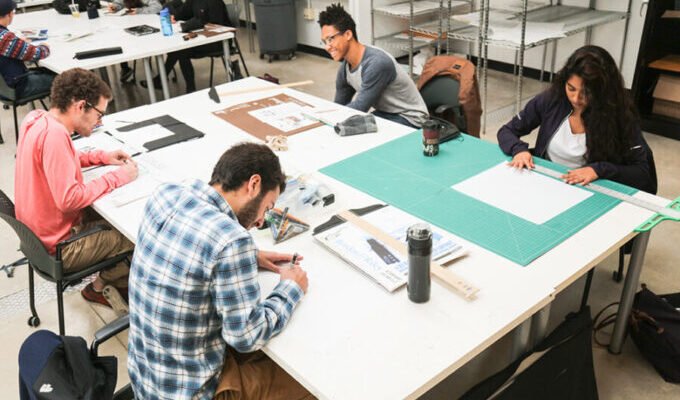
B.Des, or Bachelor of Design, is one of the most popular undergraduate courses for students looking to build a career in design. It’s a four-year professional degree that not only provides a solid foundation in design thinking but also allows students to explore their creative potential early on. The B.Des program gives you the freedom to become a designer in the discipline that excites you most—be it product design, spatial design, communication design, fashion, or digital interfaces.
A number of prestigious design institutes and universities across India offer B.Des programs in various specializations. At DCSAAD (DC School of Architecture and Design), for instance, students can specialize in Product Design, Spatial Design, or User Experience (UX) Design. These areas cater to diverse industries and reflect the growing demand for design professionals across fields like manufacturing, digital products, interior environments, and service design.
For aspiring designers, there are multiple ways to enter the design profession. One of the most direct and widely recommended paths is to pursue a B.Des degree immediately after completing school. This path allows you to immerse yourself in design education at a formative age, where you’re more adaptable to new thinking and open to creative experimentation.
To enter a B.Des program, most leading institutes in India require candidates to clear entrance exams and design aptitude tests. These exams are designed to assess your creativity, problem-solving abilities, observation skills, and understanding of basic design principles. Some of the major entrance exams include UCEED (Undergraduate Common Entrance Exam for Design), NID DAT (Design Aptitude Test), and NIFT Entrance Exam for fashion design programs. Once you clear the respective exam and make it through the counseling or interview process, you’ll receive admission based on the ranks and seat allotments.
While entering the design field through a B.Des program is ideal for those who decide early on, there are other options for students who discover their passion for design a little later. The second common route is through M.Des, or Master of Design, which is a postgraduate program. M.Des programs are offered by many reputed institutions in India, including NID (National Institute of Design), IITs, and other specialized design schools. In India, this usually is a 2 or 2.5 year program focussing on a specialised design domain.
M.Des allows students to specialize further in fields like interaction design, product innovation, visual communication, transportation design, and more. However, unlike B.Des, the number of seats for M.Des programs is very limited, making the competition significantly tougher. Admission is again entrance-based, often involving exams like CEED (Common Entrance Exam for Design), NID DAT (Design Aptitude Test) or institute-specific tests, followed by studio tests and personal interviews with portfolio.
In addition to B.Des and M.Des, there are other paths to break into the design industry. Many institutes offer Diploma and Postgraduate Diploma (PG Diploma) programs in specific design fields such as graphic design, fashion styling, UX/UI, interior design, and animation. These courses are typically shorter in duration, ranging from 3 months to 1 year, and are often skill-focused, offering practical exposure to tools and workflows used in the industry.
Diploma programs are especially helpful for those who may not have pursued design formally during their undergraduate studies but wish to switch careers or acquire a specific design skill set. Many professionals with degrees in engineering, commerce, arts, or science opt for design diplomas to transition into creative industries. Though not as extensive as a full B.Des or M.Des program, a well-structured diploma can still provide a strong portfolio and real-world design understanding.
These alternative programs may not require national-level entrance exams, but selection is usually based on interviews, aptitude tests, or portfolio submissions, depending on the institution.
Each of these routes—whether through a B.Des, M.Des, or diploma—can lead to a successful career in design. What’s most important is understanding which path aligns with your goals, timeline, and commitment level.